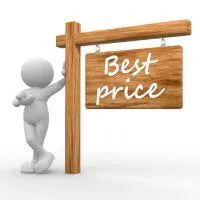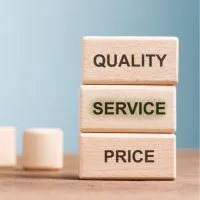
The Smart Guide to Pricing Strategy: How to Maximize Profitability
Pricing is one of the most critical aspects of any business strategy, yet it is often one of the most misunderstood. Setting the right price for your products or services requires a deep understanding of your costs, market conditions, customer behavior, and long-term goals. It’s more than just slapping a number on a product—it’s about striking a balance between value creation and profitability. A well-thought-out pricing strategy can help you capture market share, build customer loyalty, and maximize your bottom line.
Understand the Foundations: Costs and Break-Even Points

The first step in developing an effective pricing strategy is understanding your costs. Every business has fixed costs (e.g., rent, utilities, salaries) and variable costs (e.g., raw materials, production expenses) that influence pricing decisions. Knowing your break-even point—the point at which revenue equals total costs—is crucial to ensuring that your pricing covers all expenses and generates a profit.
It’s also important to conduct market research to understand the competitive landscape. How are your competitors pricing similar products or services? Are they pricing high to convey premium quality, or are they engaging in price wars to capture more customers? Understanding these dynamics can help you position your pricing competitively while staying true to your brand’s value proposition.
Focus on Perceived Value

A successful pricing strategy goes beyond costs and considers the perceived value of your offering. Customers often associate price with quality and value. For example, if your product is priced too low, customers might assume it’s of inferior quality, even if that’s not the case. Conversely, a higher price can create a perception of exclusivity and premium quality.
Value-based pricing is a strategy that focuses on what your customers are willing to pay for your product or service, based on the benefits they receive. To implement this strategy, you’ll need to understand your target audience’s needs and preferences and position your product as the solution they’re looking for. For example, if you’re selling software that saves companies time and money, your pricing should reflect the significant value your solution provides.
Leverage Dynamic Pricing

In today’s fast-paced business environment, flexibility is key. Dynamic pricing is a strategy that adjusts prices based on demand, competition, and other factors. This approach is commonly used in industries like e-commerce, travel, and entertainment. For instance, airlines frequently use dynamic pricing to adjust ticket prices based on demand, seasonality, and remaining seats.
With advancements in technology, businesses of all sizes can now leverage data analytics and AI tools to implement dynamic pricing. By analyzing customer behavior, demand patterns, and competitor activity, businesses can optimize their pricing in real-time to maximize revenue. However, it’s important to maintain transparency with your customers and avoid pricing changes that could damage trust or loyalty.
Implement Psychological Pricing Techniques

Psychological pricing involves leveraging human behavior to influence purchasing decisions. Strategies such as charm pricing (e.g., pricing at $9.99 instead of $10), bundling (e.g., offering discounts for purchasing multiple items together), and anchoring (e.g., showing a higher "original" price next to a discounted price) can make your pricing more appealing to customers. These techniques tap into customers’ subconscious, encouraging them to perceive greater value and take action.
For example, a business selling online courses could use anchoring by displaying a regular price of $500 and offering a limited-time discount of $300. The perceived savings make the deal more enticing, even if the course’s true value aligns with the discounted price.
Test, Analyze, and Adapt

Pricing is not a one-time decision—it’s an ongoing process that requires testing, analysis, and adaptation. Markets change, customer preferences evolve, and new competitors enter the scene. To stay ahead, you need to continuously monitor your pricing strategy’s performance and adjust as needed.
A/B testing is a valuable tool for evaluating different pricing models. For instance, you can test two different price points for the same product and measure which one generates more sales or higher profit margins. Additionally, gathering customer feedback can provide insights into how your pricing is perceived and whether it aligns with their expectations.
Key performance indicators (KPIs) such as conversion rates, average order value, customer lifetime value, and profit margins can help you track the effectiveness of your pricing strategy. If you notice a dip in performance, it may be time to revisit your pricing or refine your approach.
Conclusion

Maximizing profitability through smart pricing requires a multi-faceted approach that considers costs, market dynamics, customer perceptions, and business goals. By focusing on value-based pricing, leveraging dynamic pricing, and employing psychological techniques, businesses can create a pricing strategy that drives revenue and enhances customer satisfaction.
Remember, pricing isn’t set in stone. It’s a dynamic element of your business that should evolve alongside market trends and customer needs. With the right strategy and a commitment to continuous improvement, you can position your business for sustained growth and profitability in a competitive marketplace.
Leave a Comment
Comments:
©2025 Laughlin Business Credit Advisor, all rights reserved. No reproduction or use of any portion of the content or work, or the entire work, is permitted without the express written permission and authorization of the publisher. However, the publisher of these materials routinely grants authorization for reproduction or use of this work, in whole or in part. If you would like to use any portion of this material in a book, article, e-zine, newsletter, radio or television broadcast, podcast, or in any other seminar, teleconference, or other events or publications, please email or call Laughlin Business Credit Advisor.
Dive into our library and unlock a treasure trove of business insights that can transform your journey to success.
Stay inspired, informed, and ahead – fill out the form to join us now!
Laughlin Business Credit Advisors680 W. Nye Ln, Ste #201Carson City, NV 89703
All Rights Reserved,
© 2024 Great Basin Holdings, Inc.









